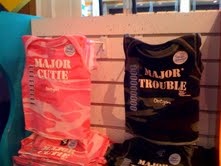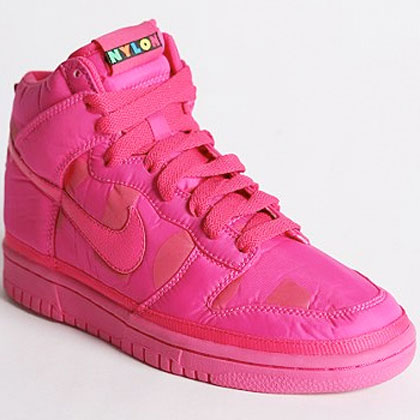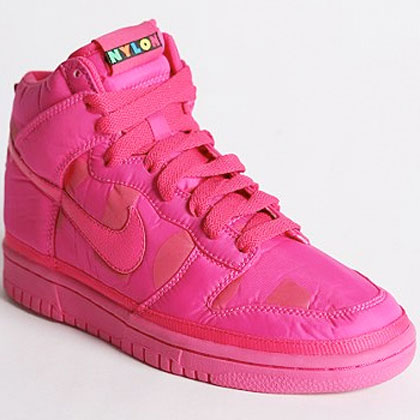As seen at the Portland Airport (thanks KCF for pointing it out!). It reminds me of this oh bother post. Which is worse–major cutie or major flirt?
Month: April 2010
Learning Exercise: Women’s Studies, Curiosity and the Value of Asking Questions
The following is a learning exercise for use in an introductory Women’s Studies classroom. I have constructed this assignment to be brief–only taking up 12-15 minutes. However, ideally it would serve as the introduction to a longer class session/discussion. You can download an abbreviated version of the assignment here.
Because I am always interested in experimenting with different techniques for using the blogs in (and as) the classroom, I decided to put this learning exercise on my blog. Anyone reading this blog is welcome to do the exercise. Try it out and then tell me what you like/don’t like, what works and what doesn’t work. You can post a comment to this entry or any of the 4 parts of the exercise.
Click on the links in order to “do” this exercise.
A. What makes you curious about this image/object?
B. Why aren’t we curious? Feminism and the importance of curiosity
C. What questions can we ask about this image/object?
D. A Final Exercise
POSSIBLE IMPLEMENTATIONS: This exercise is designed for use in a wide range of classrooms.
In a face-to-face classroom, I envision using this exercise as the introduction to a larger discussion about curiosity and some different ways that feminists are curious about the world. In this version, the students could break up into groups after this exercise and discuss their various questions. Then, as a group, they would report on one question (or line of questions) that they find particularly compelling and we would have a large group discussion about the various questions.
In a hybrid classroom, I envision using this exercise as the foundation for students’ engagement with the lesson for that section. Students would spend time on the exercise, clicking on the various links and reading the articles (indicated here on the final part of this exercise) that are related to the exercise and topic of discussion. They would post an entry on their own questions and comment on other students’ post (at least 2). Finally, we would have a face-to-face session in which we discuss the readings and our questions.
In an online classroom, I envision using this exercise in many of the same ways as in the hybrid classroom. However, instead of meeting face-to-face, students would actively engage more with each other on the blog and through online discussions (of their questions and comments). Students might also be required to post their own links to images, blog sites, media examples that connect with their own questions.
One other important note about the design of this exercise: It is designed to accommodate a wide range of students and their various levels of interest, time and ability. I deliberately provide a lot of information for students who want to learn more, but I don’t make reading and engaging with all of that information a requirement of the assignment. Additionally, I provide a wide range of different perspectives on topics, so as to reach as many different students (and their varied experiences and interests) as possible. Whenever I use assignments like this one, I always try to be clear about this aspect of the design so that they are not overwhelmed by the assignment.
What makes you curious about this image/object?
Take out a piece of paper. Spend about 2 minutes writing down as many questions as you can think of about this image. Don’t worry about answering any of your questions, just focus on being curious and asking questions about this image that speak to that curiosity. When your 2 minutes are up, click here for the next part of this learning exercise.
Why aren’t we curious? Feminism and the Importance of Curiosity
Why, you may ask, did I have you write down so many questions about the image of the pink high-top sneaker? In this mini-lecture, I want to briefly consider why we are so often not curious and then why being curious, in the form of asking lots of questions, is central to Women’s Studies and its analysis of power, privilege and injustice.
WHY AREN’T WE CURIOUS?
- We are afraid to ask questions because it exposes what we don’t know or how we are uncertain
- It is a lot of work and requires too much energy
- It stirs up too much trouble and might force us to rethink our most basic assumptions
- We are trained to receive and accept information instead of questioning it, challenging it or wondering about it
WHO (and what) BENEFITS WHEN WE AREN’T CURIOUS?
- Those who wish to maintain the status quo and who resist change
- Power structures—inside households, within institutions, in societies—that depend on our mere acceptance of ideas as “natural” or “given”
- Those who wish to hide the political workings of terms and concepts that we have been trained to merely accept
- Those who don’t want us to think critically about how systems and structures work and at whose benefit and whose expense
- Those who want privilege (who has access to it and who doesn’t) to remain invisible and uninterrogated
WHAT CAN ASKING QUESTIONS ENABLE US TO DO?
- To ask why something is the way it is is to suggest that it could be otherwise or that it shouldn’t be the way that it is
- Enables us to pay attention to how things really work and how those things may serve to reinforce unjust power relations between people, communities, nations, institutions
- Enables us to explore those things that we are afraid to question or to think about
- It opens up a connection, a space, for engagement between us and the object of our questions or between us and the others to whom we ask the questions
- Allows us to move beyond merely receiving information, to critically engaging with it
- Trains us to wonder, to pay attention, and to be engaged in the world
- Encourages us to reflect on how power and privilege work and how they contribute to oppression and injustice
Additional Readings. For more on questioning and feminist curiosity, check out some of the readings that inspired this mini-lecture:
Enloe, Cynthia. “Being Curious about our Lack of Feminist Curiosity”
Bornstein, Kate. Gender Outlaw
Butler, Judith. “A Bad Writer Bites Back”
Freire, Paulo. “The Future of School” and Learning to Question
And some of my blog entries:
Why did we stop asking questions?
Judith Butler wants us to disobey. Why? Exactly.
Questions, Questions and more Questions.
Once you are done reading this entry and clicking on the other readings/blog entries, click here to go to the next part of this exercise.
What Questions Can We Ask about the Image/Object?
There are all sorts of ways to be curious about this image/object from the perspective of power, privilege and inequality. Here are just a few questions that feminists (and you, using feminist concepts and ideas can) ask:
Labor: Who makes this sneaker? Where is it made? How is it made? How much does it cost to make? How much is it sold for? How much of the profit is given to the worker that made the shoe and how much is given to the company who produced the shoe? Does the making and selling of this sneaker lead to an unequal distribution of labor and profit–between worker/producer or between communities/regions/nations? If so, how? At whose expense is this sneaker made? For whose benefit?
Marketing: How is this sneaker, and other sneakers for women, marketed? How do advertisers encourage us to buy their products? Do their methods work to reinforce harmful stereotypes about women? If so, how and which ones? Do sneaker advertisements ever objectify women? What about these two commercials (see right below)—what are these advertisers suggesting about women? How are the attempting to get women to buy their shoes?
The Consumer/Consumption: Who has access to these sneakers? Who can buy them and who can’t? Why and how are the products that we buy important to our various identities? What do these sneakers say about us when we wear them/buy them? What kind of status and/or privilege do they afford us? What happens to this sneaker when we are done wearing it? Where do discarded sneakers go? Here?
The Worker: Who makes this sneaker? Who manages the workers who make this sneaker? Why are so many of the workers who make these sneakers women from Indonesia, Vietnam and China? What are their working conditions? Who are these women and what are their stories? Why is it important to think about and listen to their stories?
The bodies that wear them: What kinds of bodies should/do wear this sneaker? Who shouldn’t, or who can’t, wear this sneaker? What are you expected to do when you wear this sneaker–are they for engaging in sports, like running or basketball or something else? Check out these images–what clues do we get about who is/should be/most likely will wear them? What types of bodies (in terms of race, size, ability) are included/excluded from these images? Why? Is it acceptable for older women to wear these sneakers? Why or why not? What about men? Does the color of the sneaker (pink) suggest who it is for?
How might these questions, and the strenuous process of asking and engaging with them, enable us to think about how power and privilege work? For more on this last question, click here to proceed to the final phase of this activity.



